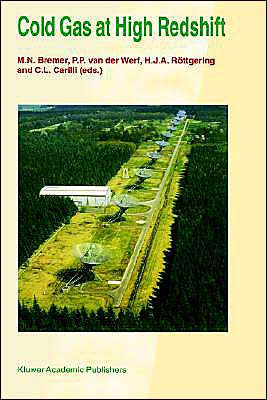5
1
9780792341352


Cold Gas at High Redshift: Proceedings of a Workshop Celebrating the 25th Anniversary of the Westerbork Synthesis Radio Telescope, held in Hoogeveen, The Netherlands, August 28-30, 1995 / Edition 1 available in Hardcover

Cold Gas at High Redshift: Proceedings of a Workshop Celebrating the 25th Anniversary of the Westerbork Synthesis Radio Telescope, held in Hoogeveen, The Netherlands, August 28-30, 1995 / Edition 1
- ISBN-10:
- 079234135X
- ISBN-13:
- 9780792341352
- Pub. Date:
- 08/31/1996
- Publisher:
- Springer Netherlands
- ISBN-10:
- 079234135X
- ISBN-13:
- 9780792341352
- Pub. Date:
- 08/31/1996
- Publisher:
- Springer Netherlands
219.99
In Stock

Product Details
| ISBN-13: | 9780792341352 |
|---|---|
| Publisher: | Springer Netherlands |
| Publication date: | 08/31/1996 |
| Series: | Astrophysics and Space Science Library , #206 |
| Edition description: | 1996 |
| Pages: | 468 |
| Product dimensions: | 6.14(w) x 9.21(h) x 0.24(d) |
From the B&N Reads Blog
